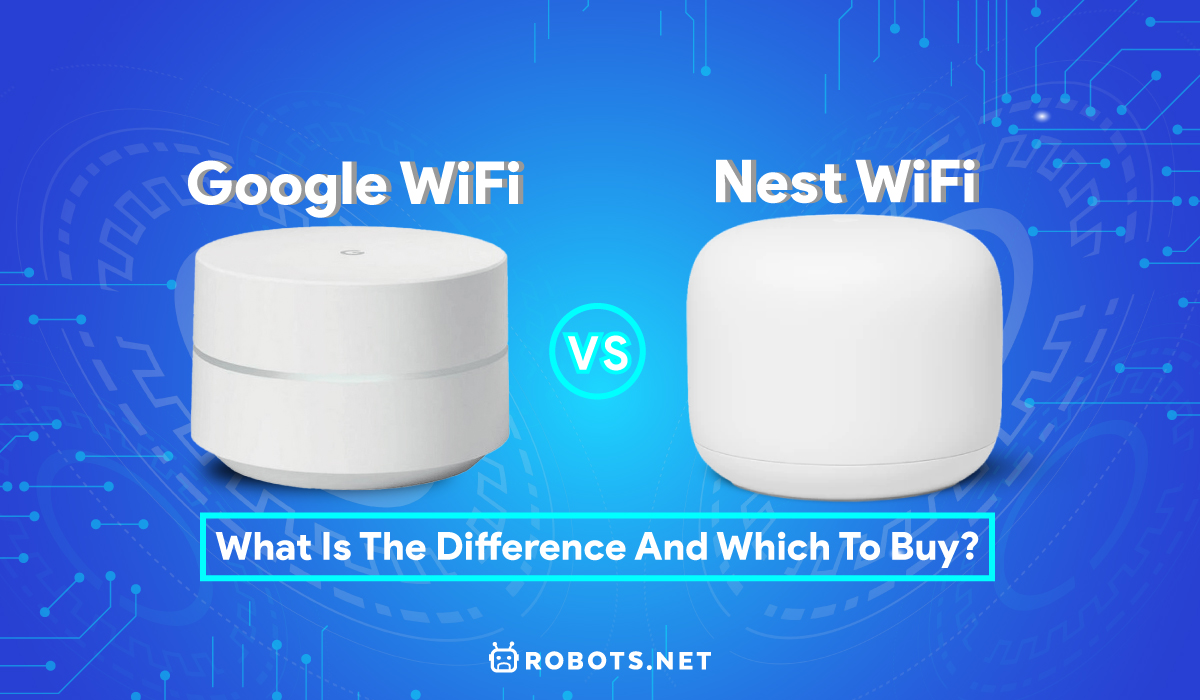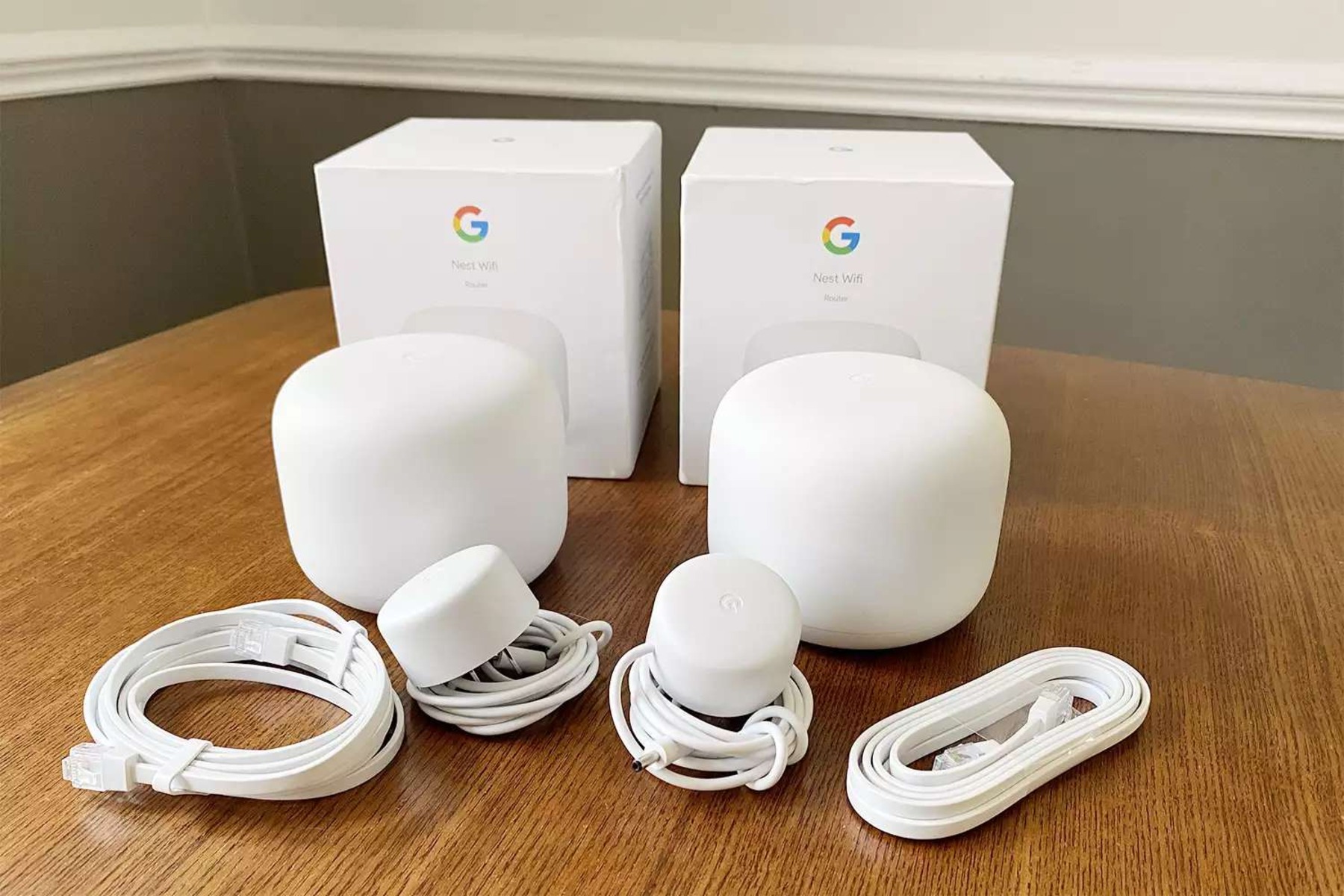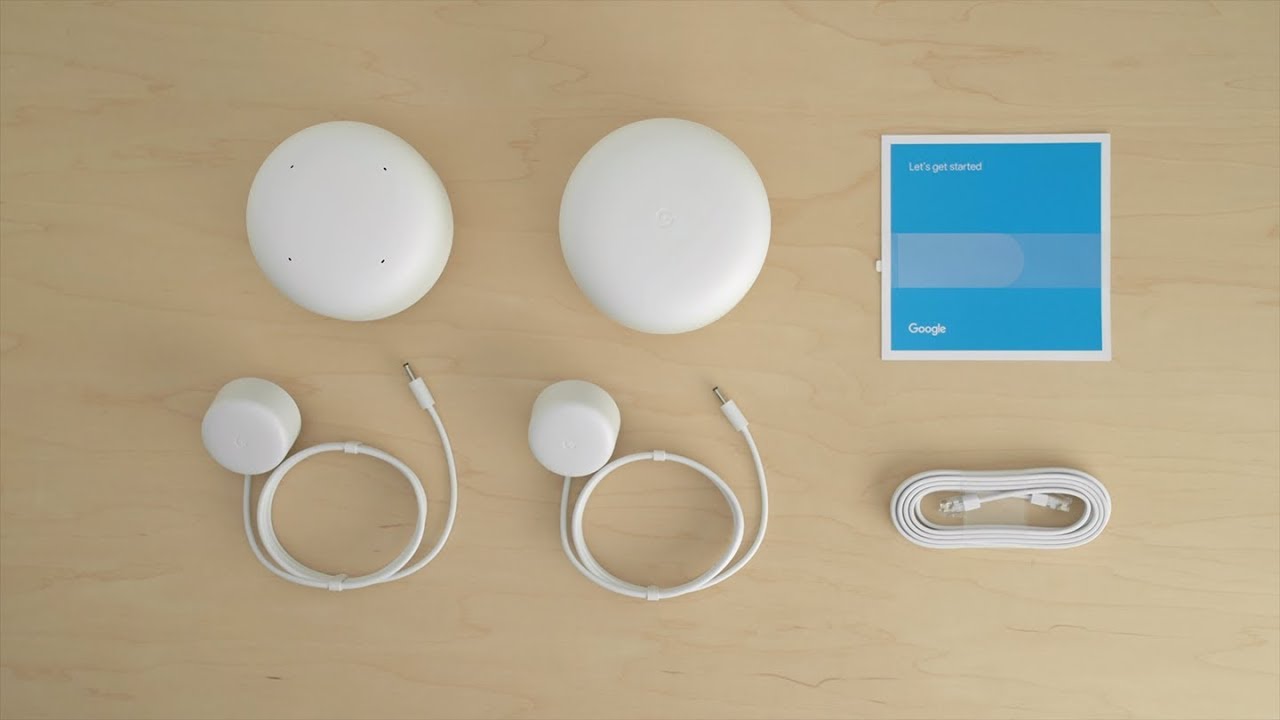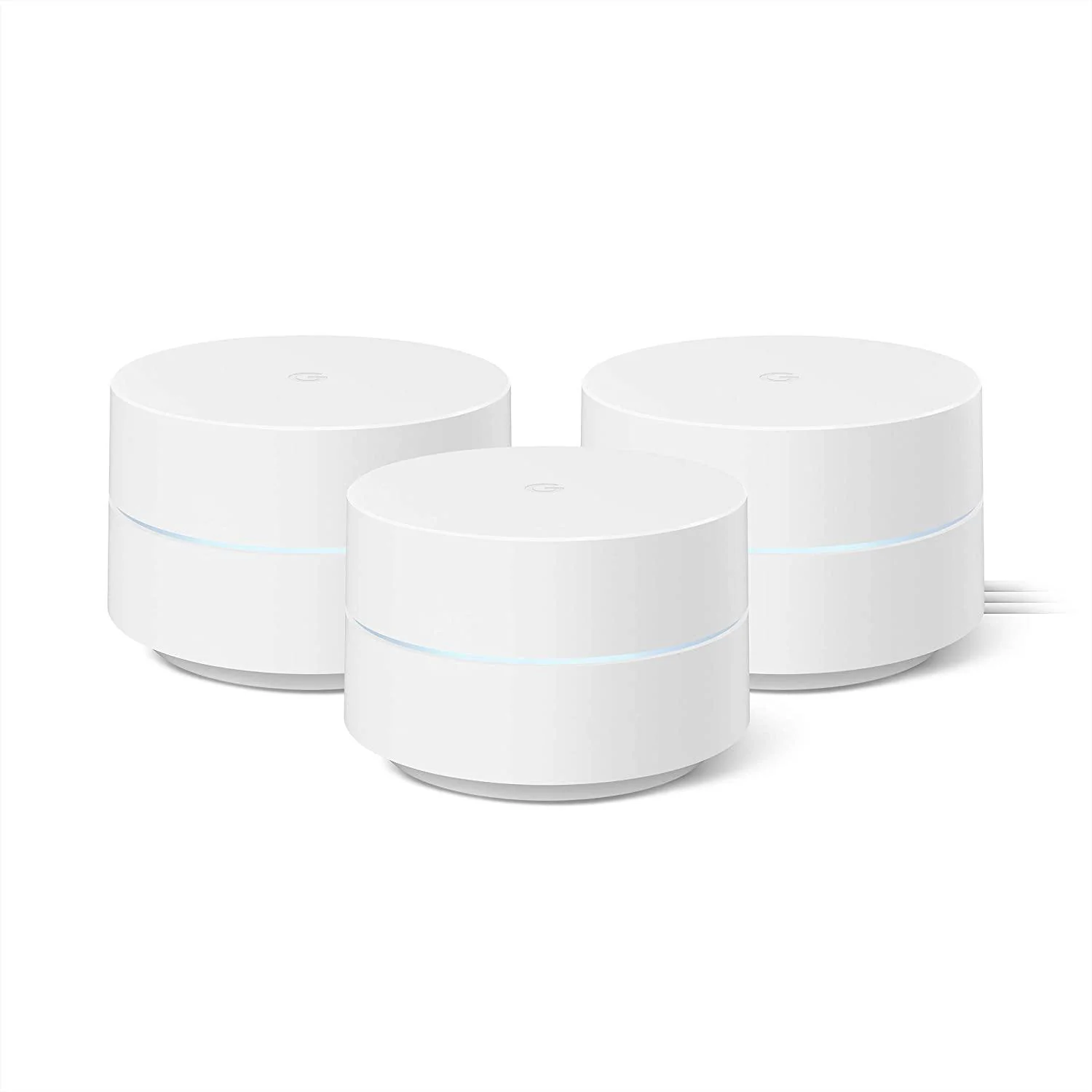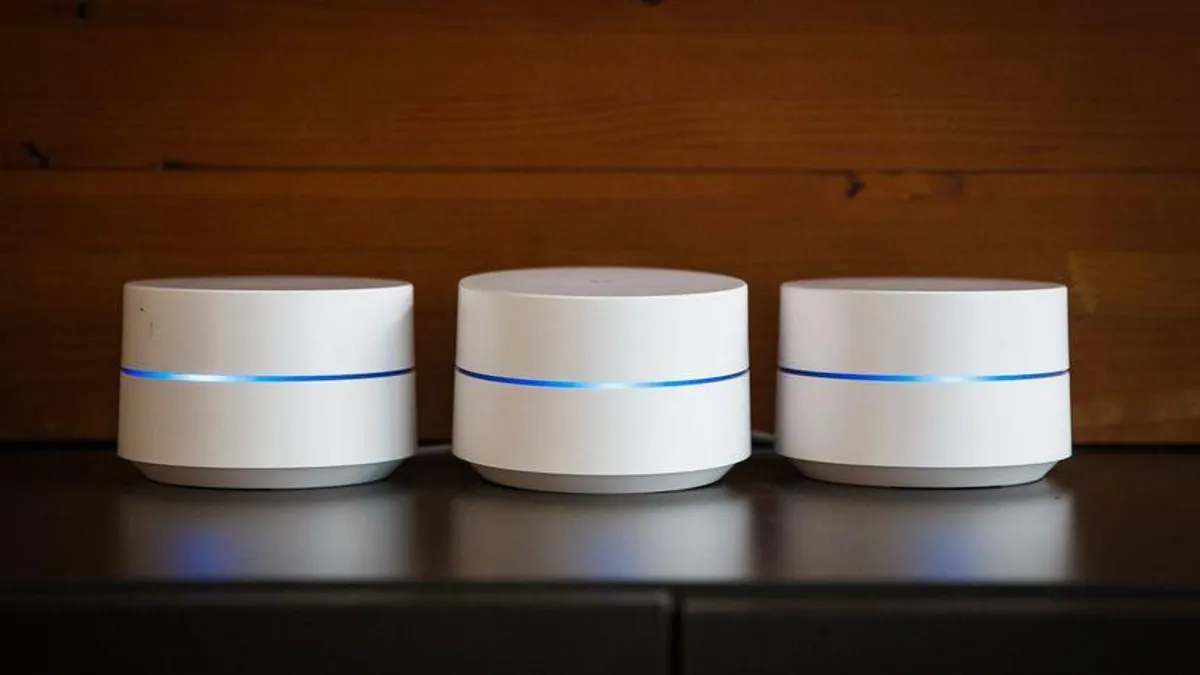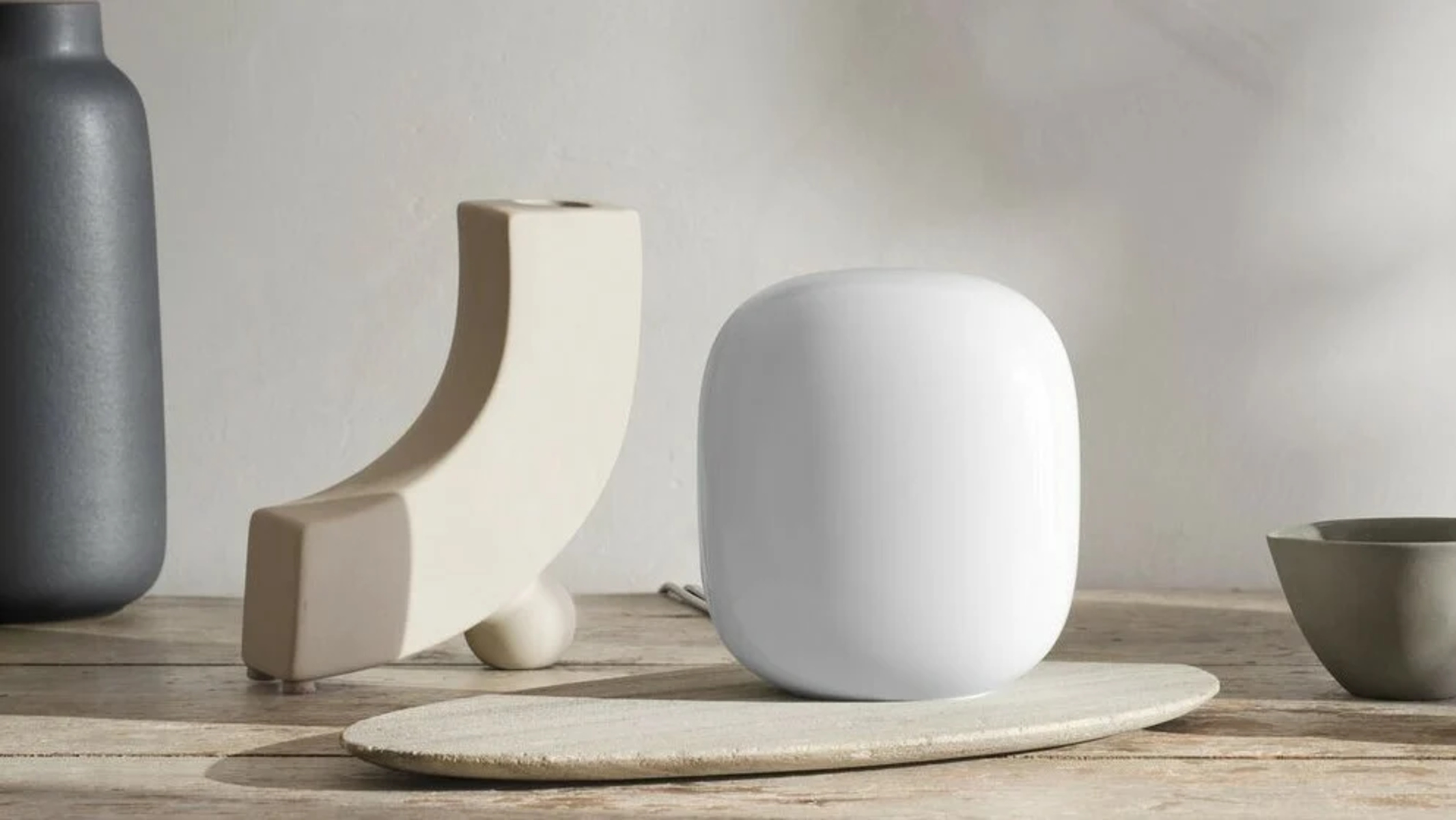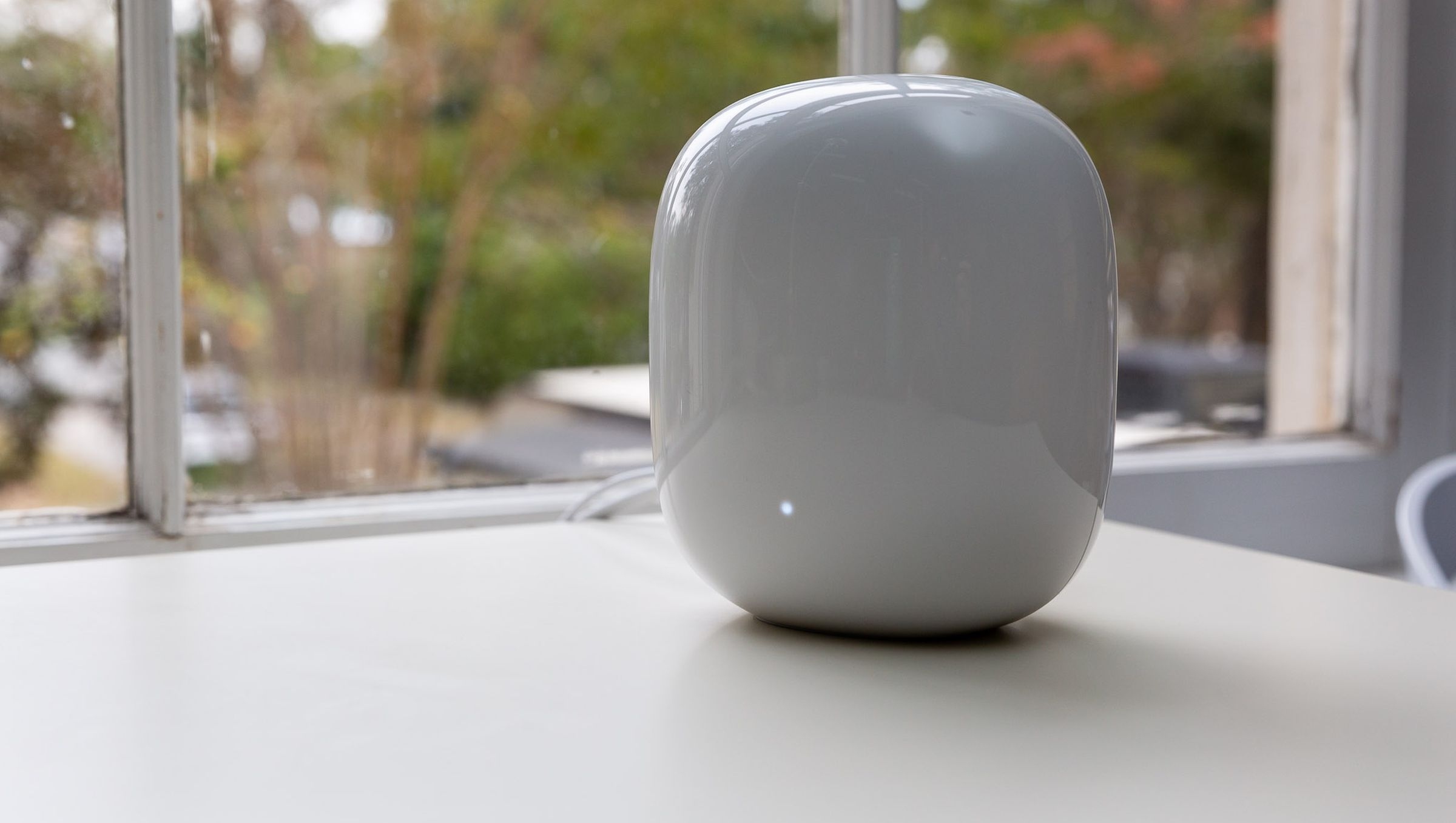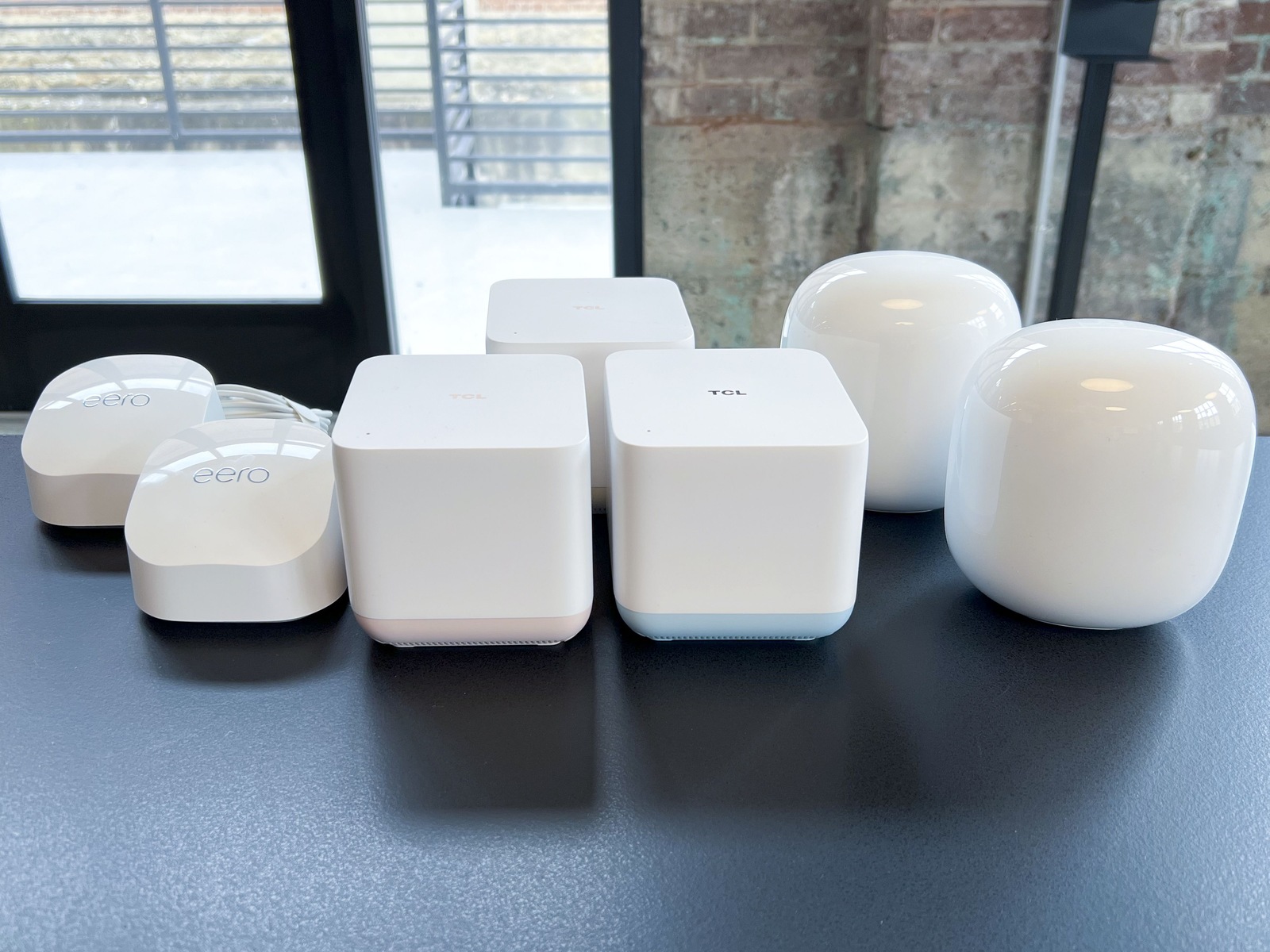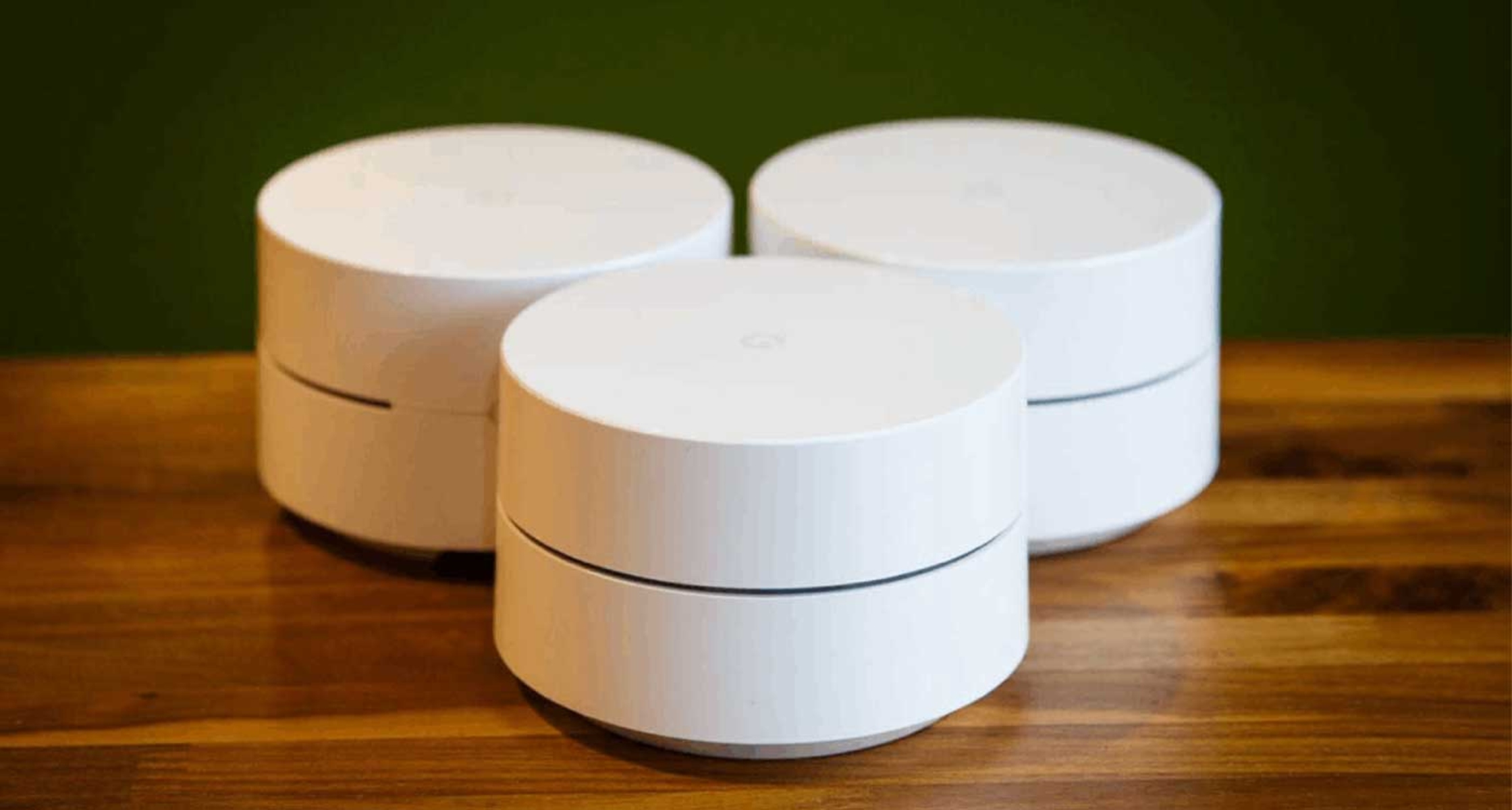Choosing a the best wireless router for your home internet can be difficult for you and me. This is especially true if you own a multi-leveled home and have many areas with poor WiFi connection. If you’re not very tech-savvy, it can be confusing with all the different options and configurations that these connections come with. Nonetheless, there has been a frontrunner that arose in recent years in Google WiFi. It’s simple, elegant, and very effective at what it does.
However, Google has recently introduced a new product in its router lineup: the Google Nest WiFi. Both are great at providing you a mesh system for your home, ensuring you have internet connection in every corner. Of course, they have their differences and may serve different needs and niches. So, how to distinguish if Google WiFi and Nest WiFi suits you the most? Let’s find out what they have to offer and stop worrying about why your internet is so slow with the WiFi connection.
What Is Google WiFi vs Nest WiFi?
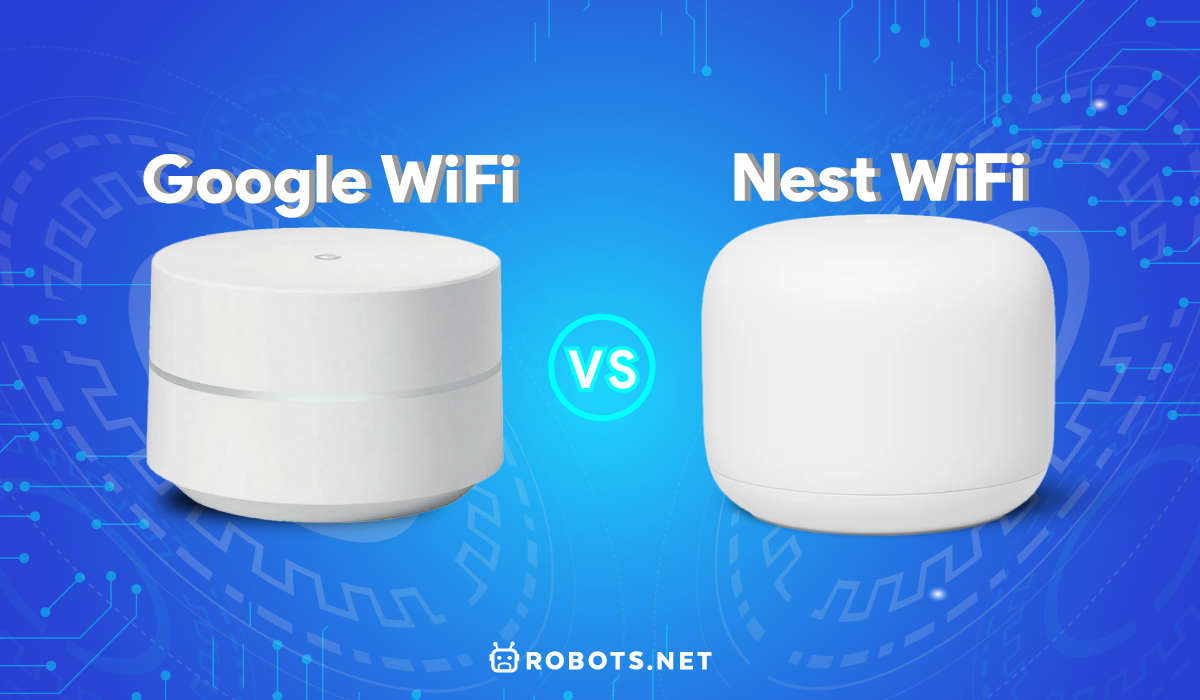

We’ll tell you upfront that Nest WiFi is an upgrade to the last-gen Google WiFi. However, that doesn’t mean everyone should get a Nest WiFi by default. While Nest WiFi does provide more features than Google WiFi, it is more expensive. That being said, it’s important to evaluate the needs of your household before you settle on which one to buy. How can you do this? Let’s start off by talking about what these two are and aren’t.
Mesh Systems
What is Google WiFi and Nest WiFi? They may be somewhat different but they share a lot of similarities. Both of them are mesh WiFi systems that allow you to blanket your home with an internet connection. They’re helpful if you’ve noticed dead WiFi spots around the house. For example, your home router may be upstairs in your home office giving you a great internet connection in the area. However, because it’s so far from your downstairs kitchen that you can’t get a good connection while cooking.
These two WiFi systems blanket your house by having more than one router installed in your house. One near the modem and the other somewhere with less signal acting as a WiFi extender. Once you install the second unit downstairs, this creates a mesh system that will give you reliable, consistent internet connection across your whole house. This is how both Google WiFi and the Nest WiFi systems work.
Router Units


It’s more than just about deciding the winner in this Google WiFi vs Nest WiFi battle. When you get Google WiFi, you can purchase just one unit or a kit. The kit is pricier but comes with three Google WiFi units. For Nest WiFi, you can purchase pretty much the same way with the option to buy a single unit or a two- or three-unit kit. However, Nest WiFi kits don’t come with multiple routers. Instead, the kit’s additional units are called “Points” and are less powerful than the Nest WiFi itself.
Don’t think that they’re useless, though. The Points bring down the cost of the Nest WiFi kit and have features the router doesn’t have (like doubling as a smart speaker). You can opt to buy multiple Nest WiFi routers if you want its features all over the house, but that means you’d have to give up the Point’s benefits.
There’s one more thing to know about the two WiFi systems before you make a purchasing decision: they’re compatible with each other. So, if you already bought a Google WiFi, don’t think that buying a Nest WiFi is out of the question. You can mix and match seamlessly because Google, fortunately, made them work together.
Google WiFi vs Nest WiFi: The Differences
With all that out of the way, let’s talk about the unique features of the Google WiFi vs Nest WiFi. What is the difference between Google WiFi and Nest WiFi, you ask? They’ll differ in many categories, namely: their coverage, power, speed, and functionality.
These differences will be the ones to truly influence your purchasing decision. However, make sure to ask yourself the right questions as you’re evaluating their differences. These are some of the questions that will assess your needs. Do you have a house larger than 2,200 sq ft? What kind of internet speeds do you need around the house? Do you want to prioritize wired connections or wireless connections? The answer to these questions will determine your choice between Google WiFi vs Nest WiFi.
#1 Performance: Connectivity & Coverage


Sure, we all want to have our devices connected to the internet. That’s a given when you’re buying a router. However, have you ever thought of the kind of connection you want to have at home? Let me explain the connection differences between Google WiFi vs Nest WiFi.
Uploading, Loading and Download Speed
Let’s evaluate them in terms of speed. First off, neither routers use WiFi 6 because Google says it’ll bring up the cost for both. However, you don’t need WiFi 6-capable routers yet since most devices still don’t support it. That means neither is truly future-proof, but they are both good for the present and near future.
This doesn’t mean these routers are slow. Both Google WiFi and Nest WiFi use WiFi 5 to give you fast internet speeds. However, Google WiFi has a lower max speed compared to Nest WiFi. Although honestly, day-to-day internet usage doesn’t normally hit the limit of your WiFi’s top speed. That’s because the routers have to use their WiFi bandwidth for communication. Thanks to that, the top speed becomes more of a theoretical number. In real-world use, both units should have enough speed to support your daily internet needs.
However, that doesn’t mean their speed differences are negligible. Google claims that the new Nest WiFi brings roughly twice as much speed as that of Google WiFi. It has an AC2200 (2200 Mbps max) speed while Google WiFi only has AC1200 (1200 Mbps max). You’ll find that Nest WiFi provides a smoother experience — especially during network-heavy tasks and even for gaming. An example of this is when you access network storage or if you use your laptop to access files from another computer/server.
Let’s not forget the Nest WiFi Point, though. As previously mentioned, the Nest WiFi Point is less powerful than the Nest WiFi router — and it shows in the speed. The Nest WiFi Point has the same speed as Google WiFi. So, buying a Nest kit won’t upgrade your speed if you’re connected to the Point.
WiFi Coverage
Apart from speed, people can use the coverage differences between the Google WiFi vs Nest WiFi as the main criterion before they make a purchasing decision. After all, why get something more expensive when it covers more than what you need? Unless you want a specific feature from the Nest, Google WiFi should be enough for you.
With Google WiFi, you’ll be able to cover approximately 1,500 square feet per router. If you buy the three-pack kit, you’ll get 3 routers which can blanket your home of 4,500 square feet. In contrast, you’ll get much more coverage if you get the Nest WiFi. Its router covers 2,200 square feet per router and will give you an added 1,600 square feet per point if you buy the Point.
With a three-pack Nest kit, you’ll be able to cover more than what the Google WiFi three-pack kit can cover. That means if you’re choosing between the Google WiFi vs Nest WiFi based on coverage, Nest WiFi wins hands-down. However, with Google WiFi being a less costly option, it stands a good chance against the Nest depending on your other needs.
Connection Types
There are more things to consider regarding connectivity apart from speed and coverage. For one, users that want wired ethernet connections on their WiFi extenders might want the Google WiFi. That’s because there are two ethernet ports on Google WiFi, one WAN, and one LAN. Buying the three-pack kit will get you six ethernet ports in total with wired connections being possible around the house.
The same can’t be said for the Nest WiFi because it comes with a Nest WiFi router and a Nest WiFi Point. While the Nest WiFi does have the same two ethernet ports on the router, the Point lacks any sort of wired connection. You’ll only get an ethernet on the main router near your modem. Of course, this can be bypassed if you purchase multiple Nest WiFi routers, but the cost can easily add up.
#2 Raw Performance Power
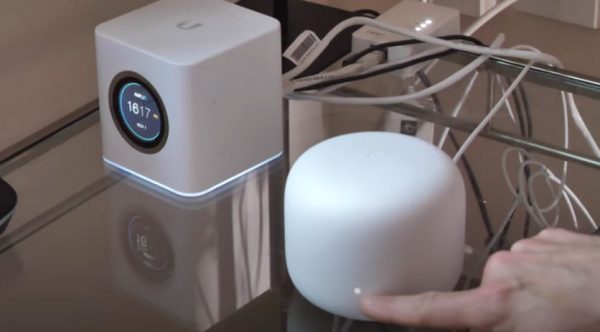

Performance isn’t just about connectivity or coverage, but sometimes about raw power. What does that mean, though? Sometimes, the power and capacity of your router will depend on the processor and the RAM. Let’s quickly compare the Google WiFi vs Nest WiFi in light of these factors.
Google WiFi houses a decent quad-core 710MHz processor with 512MB of RAM. It has 2×2 antennas with a total of 1,200Mbps split between the 2.4Ghz and 5GHz bands. On the other hand, Nest WiFi employs a quad-core 1.4GHz processor with 1GB of RAM. It has 4×4 antennas with 400Mbps on the 2.4GHz single band and 1,733Mbps on 5GHz on two bands.
What does this mean in real life? To put it simply, the Nest WiFi can handle more devices, more requests, and more data. This means you can connect a lot more devices on the Nest WiFi compared to the Google WiFi before it’s strained. This is important if you’ve got lots of devices around the house, with a home office, smart home devices, and your individual laptops and mobile phones.
#3 Setup & Customization
Setup is a breeze with Google WiFi because it has a dedicated app. The app can configure certain settings and walk you through the initial setup fairly easily. You can also use the app for basic controls on the Google WiFi. Although, don’t expect it to have lots of advanced configurations like a gaming router would.
When it comes to the Nest WiFi, things are a little bit complicated. Google didn’t make a dedicated app for the Nest WiFi but instead, put the controls into the Google Home app. This is more convenient if you use other Google devices like smart speakers and home devices. The app offers easy setup, speed tests, parental controls, and device grouping to control WiFi access on those devices. Where it gets complicated is when you want to configure advanced features such as port forwarding. You’ll have to use the old Google Home app for this one which has been updated to support the Nest. This makes customization on the Nest WiFi a bit of a hassle since you have to switch between apps. Google definitely plans on updating the Home app to support advanced settings for the Nest, but you’ll have to live with the inconvenience until then.
#4 Added Features
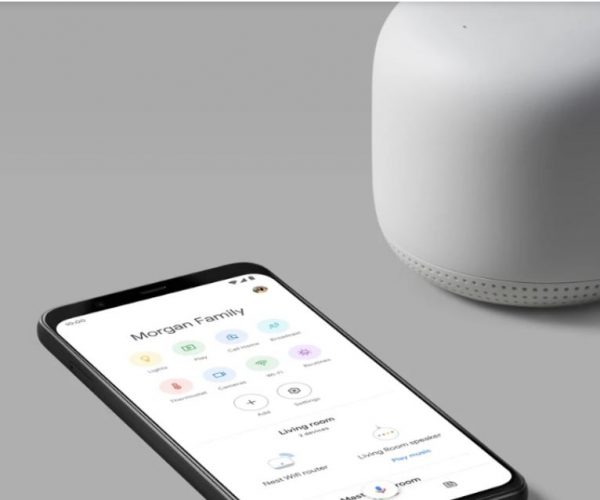

If you plan on making your house a smart home, then buying the Nest WiFi kit may interest you more. That’s because what the Nest WiFi Point lacks in raw power, it makes up for in multi-functionality. It doubles as a smart speaker, allowing you to easily call up the Google Assistant. You can play music, ask for the weather, and even ask for a speed test on your network. There’s also the added feature of pausing WiFi for certain devices or groups of devices if you have kids. Apart from these, you can pause and play music or adjust volume with just a tap on the Points. If you don’t want to buy an entire Nest kit, you can alternatively buy only a Nest WiFi Point.
#5 Design
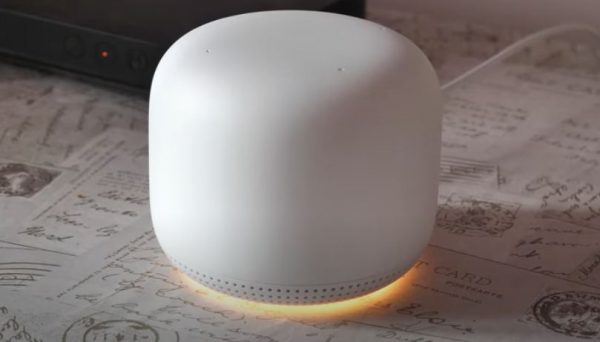

Alright, so the design may not be important to everyone. However, if you’re going to buy routers and points that are visible around the house, why not buy ones that are aesthetically pleasing? After all, putting these units on an open space with less obstruction will help you get a better signal.
That being said, it’s fortunate that Google designed all of these devices beautifully. Both devices are built with a short, cylindrical shape. They sport a minimalist design with little-to-no distractions. The Google WiFi does have a bit more distraction, though, with a blue LED light that horizontally cuts through the middle of the router. In contrast, the Nest WiFi goes for a minimalist design without any sort of LED lighting. Google WiFi’s top and bottom planes are cut with hard edges compared to the Nest WiFi that has rounded corners like a marshmallow. For the Nest WiFi Point, it is built as a smaller Nest WiFi router.
When it comes to color, there’s little variety for both the Google WiFi and Nest WiFi router. Both come only in white but there is a sliver of hope when you buy a Nest WiFi Point. That’s because the Point can come in three colors: white, blue, or coral. They’re all muted pastel tones which are both pretty and easy on the eyes.
Both designs are aesthetically pleasing but the lack of LED lighting does make the Nest WiFi feel more minimalist. If a minimal design is important to you and you don’t mind the higher price, the Nest WiFi might entice you more.
#6 Price Differences For Google WiFi and Nest WiFi
Price is a big factor in any kind of purchasing decision. Choosing between the Google WiFi vs Nest WiFi may come down to the price if you’re on a tight budget. Check out the price list below to weigh your options:
| Google WiFi | Nest WiFi | |||||
| Router | Kit
(3 routers) |
Router | Kit
(1 router, 1 point) |
Kit
(1 router, 2 points) |
Point | |
| Price (one-time payment) | $99 | $259 | $169 | $269 | $349 | $149 |
| Coverage (sq ft) | 1,500 | 4,500 | 2,200 | 3,800 | 5,400 | 1,600 |
If you’re going for the best value, no doubt the Google WiFi wins by a landslide. It’s very affordable compared to the Nest WiFi. However, buying the Nest WiFi may be worth your while if you have a larger house. Moreover, buying the points from the kits (or just an individual point) saves money on buying a smart speaker.
The Bottom Line: Google WiFi vs Nest WiFi
Having trouble knowing which one to choose? Let’s summarize and make this decision easier for you between the Google WiFi vs Nest WiFi:
Google WiFi
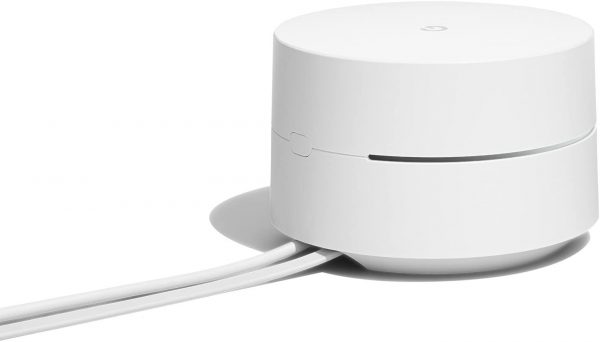

- Buy Google WiFi if:
- You only need normal day-to-day internet speeds
- Your house isn’t bigger than 4,500 square feet (for the 3-pack kit)
- You want wired connections via ethernet across your household
- There aren’t that many devices you need to connect to your network
- You’re on a budget
- All you need is consistent WiFi connection throughout the house
- Don’t buy it if:
- You need access to storage from a server or a network-based storage
- The WiFi coverage isn’t enough or you want large coverage with fewer routers
- You want a more minimalist design
- You’re planning to buy a smart speaker
Nest WiFi
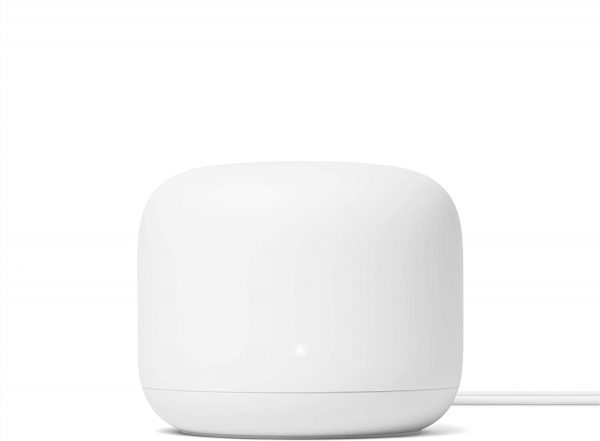

- Buy Nest WiFi if:
- You want the best possible speed for accessing network-based storage and other network-heavy activities
- Your house has a very large area that needs to be covered
- There are hundreds of devices you need to connect to the internet
- You’re planning on buying a smart speaker (Nest WiFi Point)
- A minimalist design and color variety is important to you
- Don’t buy it if:
- You’re on a budget
- You need wired connections throughout your household (Nest WiFi Point)
- Switching between apps is troublesome for you when you want to access different settings
Alternatively, you can mix and match between Google WiFi and Nest WiFi. It doesn’t have to be “Google WiFi vs Nest WiFi” where the only one can remain. Buying a Google WiFi as your extender coupled with a Nest WiFi as your router is a good deal. It’s the same price as buying the two-pack Nest WiFi kit, and you get the benefit of ethernet ports. Of course, that is if you’re willing to have less raw power on your extenders. Plus, it gives up the Point’s smart speaker functionality. It’s all about which function you prioritize given your budget.









